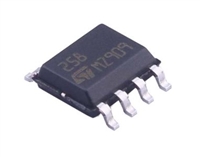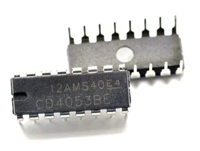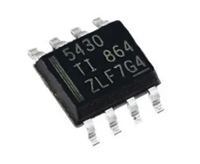THEORY OF OPERATION
DISCUSSION OF SPECIFICATIONS
DUAL-DAC COLINEAR ARCHITECTURE
DYNAMIC SPECIFICATIONS
Digital audio systems have traditionally used laser-trimmed,
current-source DACs in order to achieve sufficient accuracy.
However even the best of these suffer from potential low-
level nonlinearity due to errors at the major carry bipolar
zero transition. More recently, DACs employing a different
architecture which utilizes noise shaping techniques and
very high oversampling frequencies, have been introduced
(“Bitstream”, “MASH”, or 1-bit DACs). These DACs over-
come the low level linearity problem, but only at the expense
of signal-to-noise performance, and often to the detriment of
channel separation and intermodulation distortion if the
succeeding circuitry is not carefully designed.
Total Harmonic Distortion + Noise
The key specification for the PCM63P is total harmonic
distortion plus noise (THD+N). Digital data words are read
into the PCM63P at eight times the standard compact disk
audio sampling frequency of 44.1kHz (352.8kHz) so that a
sine wave output of 991Hz is realized. For production
testing, the output of the DAC goes to an I to V converter,
then to a programmable gain amplifier to provide gain at
lower signal output test levels, and then through a 40kHz
low pass filter before being fed into an analog type distortion
analyzer. Figure 1 shows a block diagram of the production
THD+N test setup.
The PCM63 is a new solution to the problem. It combines all
the advantages of a conventional DAC (excellent full scale
performance, high signal-to-noise ratio and ease of use) with
superior low-level performance. Two DACs are combined
in a complementary arrangement to produce an extremely
linear output. The two DACs share a common reference and
a common R-2R ladder to ensure perfect tracking under all
conditions. By interleaving the individual bits of each DAC
and employing precise laser trimming of resistors, the highly
accurate match required between DACs is achieved.
For the audio bandwidth, THD+N of the PCM63P is essen-
tially flat for all frequencies. The typical performance curve,
“THD+N vs Frequency,” shows four different output signal
levels: 0dB, –20dB, –40dB, and –60dB. The test signals are
derived from a special compact test disk (the CBS CD-1). It
is interesting to note that the –20dB signal falls only about
10dB below the full scale signal instead of the expected
20dB. This is primarily due to the superior low-level signal
performance of the dual-DAC Colinear architecture of the
PCM63P.
This new, complementary linear or dual-DAC Colinear
approach, which steps away from zero with small steps in
both directions, avoids any glitching or “large” linearity
errors and provides an absolute current output. The low level
performance of the PCM63P is such that real 20-bit resolu-
tion can be realized, especially around the critical bipolar
zero point.
In terms of signal measurement, THD+N is the ratio of
DistortionRMS + NoiseRMS / SignalRMS expressed in dB. For
the PCM63P, THD+N is 100% tested at all three specified
output levels using the test setup shown in Figure 1. It is
significant to note that this test setup does not include any
output deglitching circuitry. All specifications are achieved
without the use of external deglitchers.
Table I shows the conversion made by the internal logic of
the PCM63P from binary two’s complement (BTC). Also,
the resulting internal codes to the upper and lower DACs
(see front page block diagram) are listed. Notice that only
the LSB portions of either internal DAC are changing
around bipolar zero. This accounts for the superlative per-
formance of the PCM63P in this area of operation.
Dynamic Range
Dynamic range in audio converters is specified as the measure
of THD+N at an effective output signal level of –60dB
referred to 0dB. Resolution is commonly used as a theoretical
measure of dynamic range, but it does not take into account
the effects of distortion and noise at low signal levels. The
INPUT CODE
LOWER DAC CODE
UPPER DAC CODE
ANALOG OUTPUT
(20-bit Binary Two’s Complement)
(19-bit Straight Binary)
(19-bit Straight Binary)
+Full Scale
011...111
011...110
000...010
000...001
000...000
111...111
111...110
100...001
100...000
111...111 + 1LSB*
111...111 + 1LSB*
111...111 + 1LSB*
111...111 + 1LSB*
111...111 + 1LSB*
111...111
111...111
111...110
000...010
000...001
000...000
000...000
000...000
000...000
000...000
+Full Scale – 1LSB
Bipolar Zero + 2LSB
Bipolar Zero + 1LSB
Bipolar Zero
Bipolar Zero – 1LSB
Bipolar Zero – 2LSB
–Full Scale + 1LSB
–Full Scale
111...110
000...001
000...000
*The extra weight of 1LSB is added at this point to make the transfer function symmetrical around bipolar zero.
TABLE I. Binary Two’s Complement to Colinear Conversion Chart.
®
5
PCM63P






 MAX6675资料手册参数详解、引脚配置说明
MAX6675资料手册参数详解、引脚配置说明

 LM258引脚图及功能介绍、主要参数分析
LM258引脚图及功能介绍、主要参数分析

 CD4052资料手册参数详解、引脚配置说明
CD4052资料手册参数详解、引脚配置说明

 一文带你了解TPS5430资料手册分析:参数介绍、引脚配置说明
一文带你了解TPS5430资料手册分析:参数介绍、引脚配置说明
